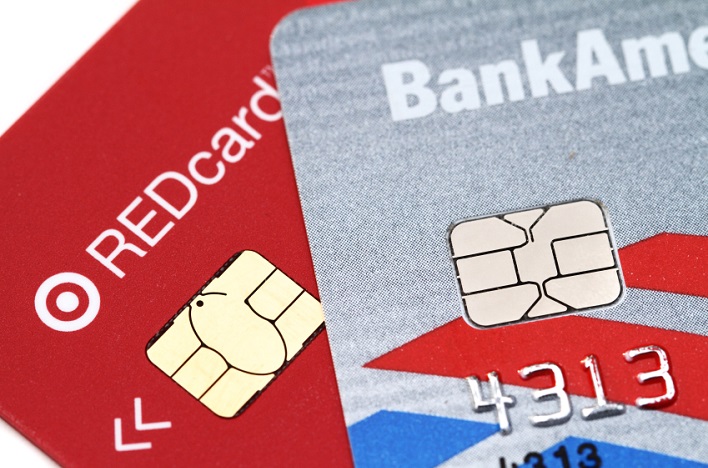The technology is designed to reduce fraudulent transactions.
The U.S. banking industry is making a huge change in how it handles credit and debit cards. And if your small business accepts either form of payment for in-person transactions, you need to understand EMV.
EMV stands for Europay, MasterCard and Visa and represents a technology in which debit and credit cards are embedded with a chip, typically in addition to the standard magnetic stripe on the back of the card. The chip, along with the cardholder’s PIN or signature, are used to authenticate the in-person purchase of goods and services.
EMV is not new. In fact, the technology has been in existence for many years across the globe, with the United States being one of the last developed countries to implement it.
Cards equipped with EMV chips are designed to deter the creation of counterfeit and fraudulent cards. The chip is more difficult to counterfeit than a magnetic stripe-only card. It is also designed to reduce the opportunity for an in-person purchase to be fraudulent.
How It Works
First, the cardholder needs to be in possession of a debit or credit card with the chip embedded in it. Over the last several months, banks and credit unions have been issuing chip-enabled cards to their customers.
Second, your point-of-sale (POS) terminal must be ready to accept and read these cards—yes, this does mean you’ll probably need a new POS terminal.
The cardholder inserts the card into the chip reader within the POS terminal (in place of swiping the card like most do today) and leaves it in the POS terminal for the duration of the authorization process.
The POS terminal will then prompt the cardholder to enter a PIN or to sign the authorization screen. Once the authorization process is complete, the cardholder will remove the card from the POS terminal.
The whole process takes about the same amount of time as swiping the card. It is important to note that the chip technology only works for in-person purchases. It is not designed to work for purchases made via telephone call or over the Internet.
What Changed on Oct. 1
The country’s major credit card issuers—Visa, MasterCard, Discover and American Express—set Oct. 1, 2015, as the deadline for when most merchants and businesses should start accepting EMV cards for in-person purchases.
It signifies a shift in liability for all parties involved in the transaction. Before, if a cardholder claimed an in-person transaction was initiated without their intent or from a counterfeit card, the cardholder’s bank (the card issuer) was typically liable for the transaction. As of Oct. 1, 2015, the liability could be shifted back to the merchant’s processor (and ultimately the merchant).
What You Should Do
By now, you should have been contacted by your merchant services representative about replacing or upgrading your POS terminal to accept and process chip-enabled cards. If not, you should contact them right away.
You also should determine what other software or hardware changes may be necessary to process chip card transactions. For example, will the new POS terminal integrate with your existing cash register and your back-end reporting systems?
Don’t forget to include training of your staff during this migration. They will be your best defense in educating your customers about the technology, why it is important and how to successfully process a chip card transaction.
The change to EMV is a significant investment for all parties. In the end, it’s designed to reduce the number of counterfeit cards as well as fraudulent transactions made in-person.

